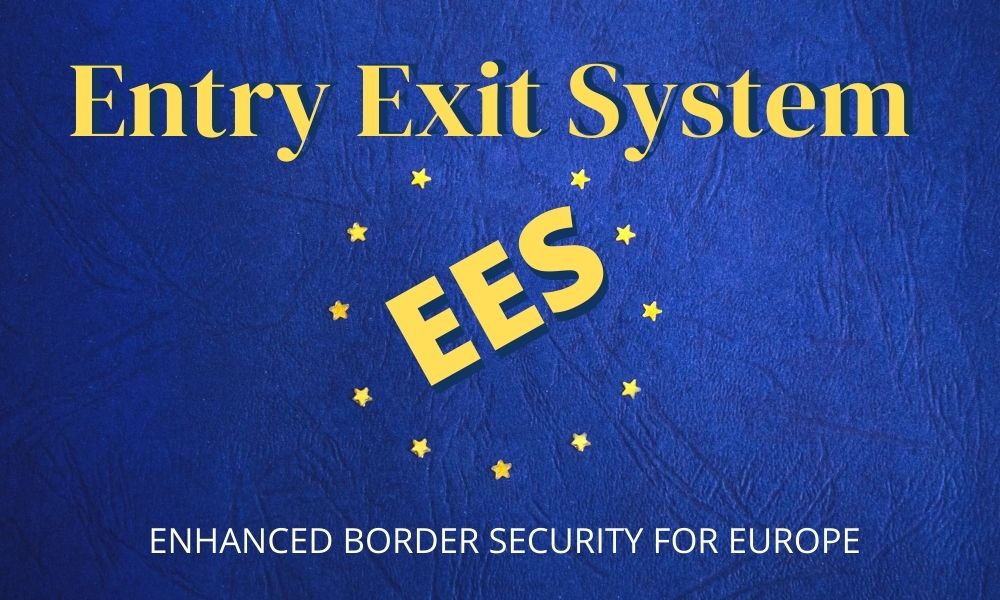Understanding Europe’s Entry Exit System (EES) System

- Posted on 27 Nov, 2020
- 0 1,454
How the EES complements the ETIAS
November 2020 - Traveling to and from Europe is changing, and the Entry Exit System (EES) is just one of the changes the European Union (EU) has implemented to enhance border security. The EES is being launched in preparation for the European Travel Information & Authorization System (ETIAS), a visa waiver program anticipated to launch early 2023.
What is the Entry Exit System (EES) System?
EES is essentially an IT system and database that registers every time a non-EU national (sometimes called third-country nationals) enters and exits an external EU/Schengen Area border.
This system will apply to the Schengen area of Europe, a 26-country region of Europe (mostly EU countries) that sustains open border and trade policies as a group. The EES will help identify who is entering and exiting the Schengen zone, as well as identify individuals who may attempt to extend their stay beyond the limits of their visa or short-term travel plans (beyond 90 days in any 180-day period).
For more information on Schengen Area countries, see our Schengen Area Map.
On what date will the EES become effective?
The Entry Exit System has been in development since 2017 and is expected to be fully operational by late 2020/early 2021. Once fully implemented, this system will provide the foundation for ETIAS.
What are the goals of the Entry Exit System (EES)?
One of the primary goals of the Entry Exit System is to identify irregular migration and maintain better security at the external border. Border security, law enforcement from member states, and Europol will all maintain access to this database in an effort to further identify security risks.
Border management and cross-border security is a key element to the EES and ETIAS. This creates a unified system that will identify travelers from outside the Schengen Area and potentially mitigate terrorism, human trafficking, and other crimes.
The current passport stamp system does not keep track of external border crossings and cannot detect when travelers have over-stayed. The process is also time-consuming at the border.
That being said, another goal in establishing both EES and ETIAS is to facilitate faster processing at the external borders. The EES is primarily a digital process that involves scanning your passport and performing a rapid security check. The system is also designed to track precise date of entry and can notify authorities about individuals who have not exited at their anticipated date.
Is the Entry Exit System the same as the ETIAS?
The Entry Exit System will exist concurrently with ETIAS—they are not the same. ETIAS is a waiver/authorization document (electronic) that involves confirming your identity and processing a background check to ensure no security risks. The EES will collect biometric identification specific to the dates of entry and exit at the external EU borders.
Through ETIAS, travelers will be able to travel across internal borders without the need for additional security checks and paperwork. The EES and ETIAS combined will create a robust database that will track irregular migration and mitigate potential security vulnerabilities. Read more about ETIAS here.
Which travelers will be subject to the Entry Exit System?
The EES will apply to all third-country nationals, but various entities and agencies define this term differently. According to the website for the European Commission, the governing body of the European Union, a third-country national is defined as, “Any person who is not a citizen of the European Union within the meaning of Art. 20(1) of TFEU and who is not a person enjoying the European Union right to free movement.” Essentially, any non-EU citizen or any traveler who does not have right to free movement in the EU will be subject to this new system.
What types of information about travelers will the EES system collect?
Regardless of if you are a short-term traveler using the ETIAS waiver or a long-term traveler/visa holder, the EES will collect certain biometric information, including:
- Facial image
- Personal information, including name, date of birth, nationality, and sex
- Travel documentation, including passport number, country of origin, and expiration dates
- Fingerprint
The European Commission states that information will be collected and held, “in full respect of fundamental rights and data protection.” However, if you love collecting stamps on your passport, you will have to make a mental adjustment—EES will replace the passport stamp system.
ETIAS allows visa-free travel to the Schengen Area. Plan your trip today.
The Entry Exit System, combined with the European Travel Information & Authorization System, will allow for more secure travel within the Schengen area of Europe. Starting in 2023, the ETIAS visa waiver will be required for short-term travel for citizens from 61 countries. Get all the updates on travel to Europe and bookmark our blog for the latest ETIAS news today!
